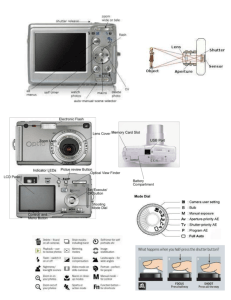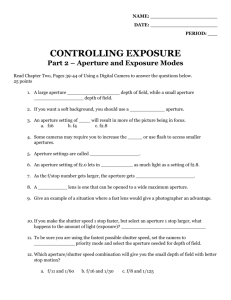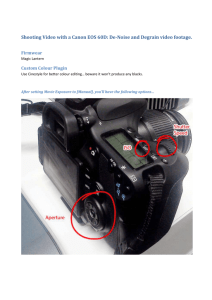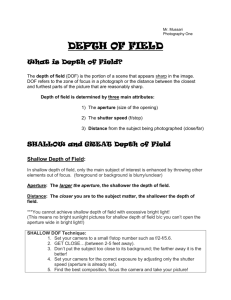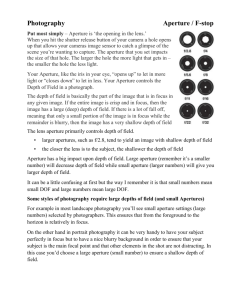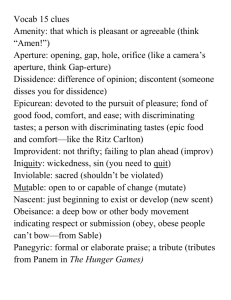Aperture and shutter speed are one of the most important
advertisement
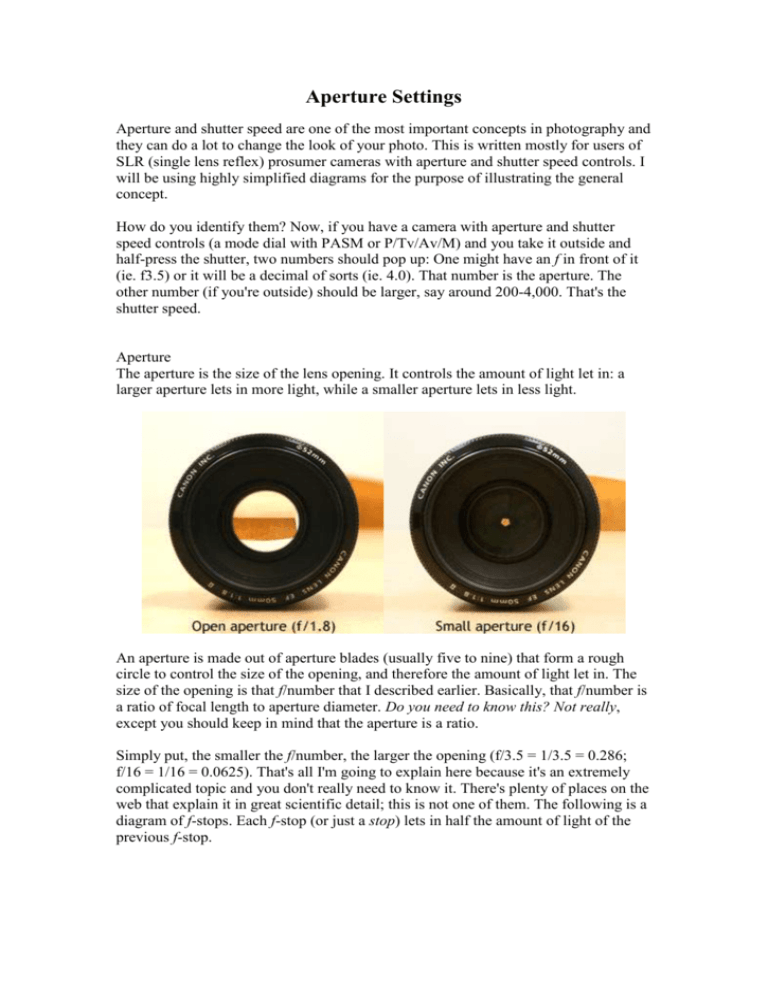
Aperture Settings Aperture and shutter speed are one of the most important concepts in photography and they can do a lot to change the look of your photo. This is written mostly for users of SLR (single lens reflex) prosumer cameras with aperture and shutter speed controls. I will be using highly simplified diagrams for the purpose of illustrating the general concept. How do you identify them? Now, if you have a camera with aperture and shutter speed controls (a mode dial with PASM or P/Tv/Av/M) and you take it outside and half-press the shutter, two numbers should pop up: One might have an f in front of it (ie. f3.5) or it will be a decimal of sorts (ie. 4.0). That number is the aperture. The other number (if you're outside) should be larger, say around 200-4,000. That's the shutter speed. Aperture The aperture is the size of the lens opening. It controls the amount of light let in: a larger aperture lets in more light, while a smaller aperture lets in less light. An aperture is made out of aperture blades (usually five to nine) that form a rough circle to control the size of the opening, and therefore the amount of light let in. The size of the opening is that f/number that I described earlier. Basically, that f/number is a ratio of focal length to aperture diameter. Do you need to know this? Not really, except you should keep in mind that the aperture is a ratio. Simply put, the smaller the f/number, the larger the opening (f/3.5 = 1/3.5 = 0.286; f/16 = 1/16 = 0.0625). That's all I'm going to explain here because it's an extremely complicated topic and you don't really need to know it. There's plenty of places on the web that explain it in great scientific detail; this is not one of them. The following is a diagram of f-stops. Each f-stop (or just a stop) lets in half the amount of light of the previous f-stop. Now, lets get on to why this matters and how it can change what your picture looks like. Basically, a larger aperture (lower f/number) will have your subject in focus, and everything in front of and behind it blurry. A smaller aperture will have your subject in focus and everything in front of and behind it quite focused as well. Take a look at the following diagram; the further apart the lines are, the more out of focus something is: Large aperture (f/1.8). Small aperture (f/16). Summary: Large aperture, background out of focus; small aperture, everything in focus. (Large aperture = smaller f-number, small aperture = larger f-number).



